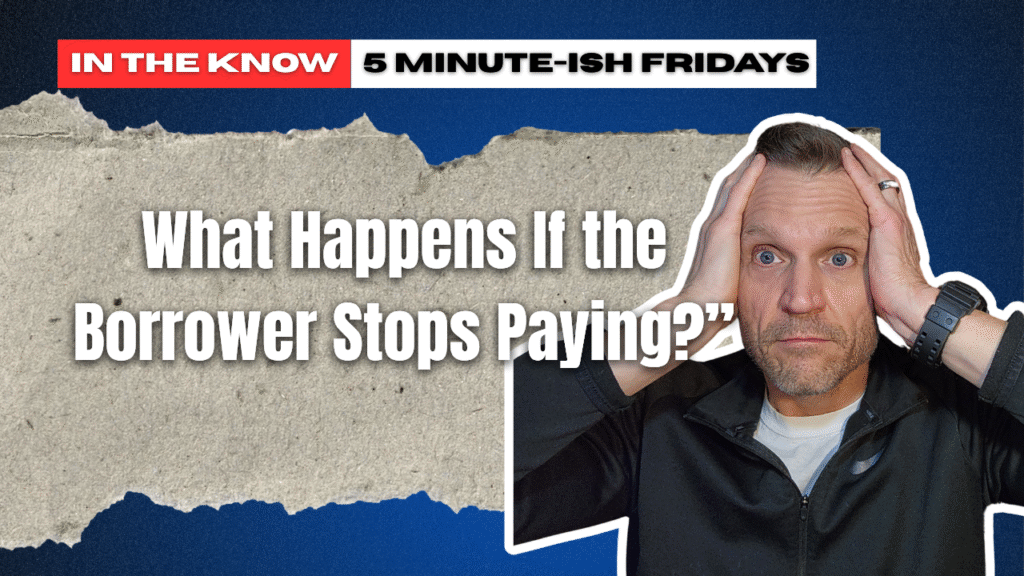In the world of real estate investing, one of the most pressing concerns is what happens when a borrower stops making payments. This situation can be daunting, but understanding the legal processes and options available can help investors navigate these challenges effectively. This blog post will delve into the implications of borrower defaults, the foreclosure process, and alternative solutions.
The Current Landscape of Mortgage Delinquency
As of Q2 2025, the national mortgage delinquency rate has risen to 3.12%, up from 2.9% in the previous quarter. This increase highlights the importance of being prepared for potential borrower defaults. In 2024, 32% of note investors reported using alternatives to foreclosure, such as loan modifications or cash-for-keys, indicating a shift towards more proactive management of delinquent loans.
The Role of the Investor
When a borrower stops paying, the investor must shift their mindset from being a landlord to acting as a bank. This transition involves understanding the legal protections in place and the importance of the loan documents and state laws. Investors must consult qualified professionals, such as attorneys or financial planners, to ensure they make informed decisions.
Understanding Foreclosure
Judicial vs. Non-Judicial Foreclosure
Foreclosure is often seen as a last resort, and it is essential to understand the differences between judicial and non-judicial foreclosures:
- Judicial Foreclosure: This process involves the court system and can be lengthy (9 to 24 months), with legal costs adding to the expense. Additionally, if the borrower files for bankruptcy, this can further delay the process.
- Non-Judicial Foreclosure: This method follows state-approved processes and is typically faster (2 to 6 months) and simpler, provided that the paperwork is in order.
Importance of Due Diligence
Before investing in notes, it is vital to conduct thorough due diligence on the loan documents. Missing signatures, gaps in assignments, or unrecorded documentation can lead to significant issues in court. Investors should be prepared to spend money on legal advice to avoid costly mistakes down the line.
Proactive Strategies for Managing Defaults
Communicating with Borrowers
While it may not be advisable for investors to reach out directly to borrowers, their servicers need to do so. Many borrowers may be willing to restart payments if approached correctly. Options such as loan modifications, forbearance agreements, or cash-for-keys can be effective in resolving payment issues without resorting to foreclosure.
Exploring Alternatives to Foreclosure
If foreclosure becomes necessary, it is important to remember that it is not the end of the road. Investors can take back the property, sell it, rent it out, or offer seller financing. Each of these options can help recover investments and mitigate losses.
Case Study: A Real-World Example
Consider a scenario where an investor purchased a note in a judicial state. After three months, the borrower stopped making payments. The investor offered a loan modification, but the borrower did not respond, leading the investor to file for foreclosure. The process took 18 months, but ultimately, the property was sold for 80% of its value, resulting in a significant return on investment. This example illustrates that while foreclosure can be a lengthy process, it can still yield positive outcomes if managed correctly.
Key Takeaways
- Know the Laws: Understanding the laws of the states where you invest is crucial. Judicial foreclosures are slower and more expensive, while non-judicial foreclosures are quicker but still require proper paperwork.
- Act Proactively: Do not wait 90 days to take action if payments are missed. Early intervention can lead to better outcomes.
- Consult Professionals: Always seek advice from attorneys or financial advisors to explore the best options available.
- Help Borrowers: Sometimes, borrowers face genuine hardships. If you are in a position to assist them, consider options that can help them get back on track.
Conclusion
Navigating the complexities of borrower defaults requires a solid understanding of the legal landscape and proactive management strategies. By being informed and prepared, investors can protect their interests and potentially turn challenging situations into opportunities for recovery. If you have further questions or need assistance, consider reaching out to a professional who can guide you through the process.
Check out the video below:
